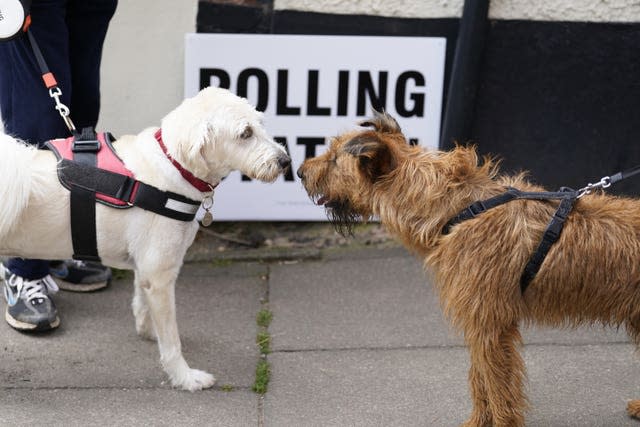How are general election notional results calculated after boundary changes?
Working out the electoral impact at the next general election of extensive boundary changes for constituencies has required a series of complex calculations based on previous polling days.
The amount a constituency is altered by the boundary revisions is measured by the index of change, which ranges from none to more than 100, in cases such as the new Bristol North East seat.
Here the index of change is 116.4 and the new constituency includes elements of Bristol East, Bristol North West, Filton & Bradley Stoke and Kingswood, where there will be a February by-election after the resignation of Conservative Chris Skidmore.
In each case a “base constituency” is identified, the one that contributes most voters to the new seat.
The index is then calculated as the sum of the number of voters leaving and joining the base constituency in order to form the new one, expressed as a percentage of the total electorate of the old base constituency.
So the new Ely & East Cambridgeshire seat has the old constituency of Cambridgeshire South East as its base, with 58,080 voters from a total electorate of 87,032 transferred to it, leaving 28,952 who are not.
A total of a further 18,199 electors are acquired from the old Cambridgeshire North East and Cambridgeshire South constituencies to complete Ely & East Cambridgeshire’s electorate of 76,279.
This means the index of change for Ely & East Cambridgeshire is the number of electors lost from base, 28,952, plus the 18,199 added to base, giving a total of 47,151. This is 54.2% of the 87,032 electorate of the base constituency, making the index 54.2.

The notional results were compiled by Colin Rallings and Michael Thrasher, associate members of Nuffield College, Oxford and emeritus professors at the University of Plymouth.
They produced the equivalent estimates for the two previous boundary reviews, fully implemented in 1997 and 2010 respectively.
As then, the calculations for Scotland were made by Professor David Denver of Lancaster University and those for Northern Ireland by Nicholas Whyte, founder of the www.ark.ac.uk website.
The notional results were compiled on behalf of BBC News, ITV News, Sky News and the PA news agency.
Prof Rallings and Prof Thrasher note that in five seats, boundary changes mean a different party would have won in 2019, even though the name has not been changed.
They are Leeds North West, won by Labour in 2019, but Conservative by 2,001 votes under the new boundaries, and Warrington South, won by the Conservatives but switching to Labour by just 65 votes in the notional results.
Westmoreland & Lonsdale changes from Lib Dems to Conservatives, with the party also losing two Scottish seats to the SNP – Caithness, Sutherland & Easter Ross, and Fife North East.
Replaying the 2019 general election on the new boundaries has meant using data from local council results, as the teams did in previous such exercises in 1983, 1995 and 2007.
For “shire” England and the metropolitan areas, the 2019 council election results were used, supported by weighted results for 2017, 2018, 2021 and 2022.
The calculations for London are based on the 2018 and 2022 elections, with those in 2017 used for Wales, 2017 and 2022 for Scotland and 2019 and 2023 for Northern Ireland.
Those compiling the notional results had to take account of the multi-member wards in local government that allow parties to field more than one candidate and electors to vote for more than one party.
In Scotland and Northern Ireland, where the single transferable vote system is used, the first preference votes for each party were the main focus.
Other issues include the large number of independents and candidates who stand for minor parties at local elections, cases where one or more of the major parties have no candidates in a ward, and extensive local government boundary changes in recent years.


